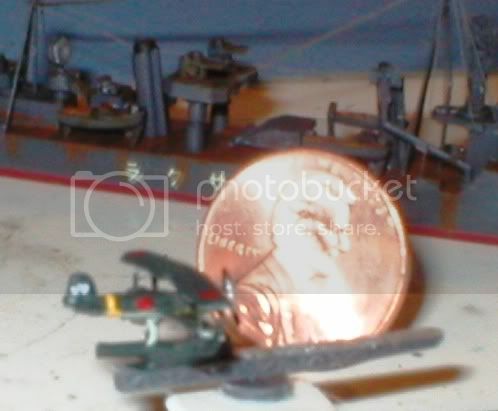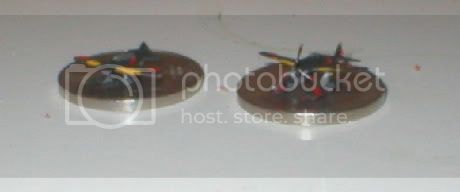Ohh, the dreaded non-stick gremlin hath graced your bench, mate!
Personally, Al, I haven't encountered this particular issue, BUT, all of us modelers have experienced a similar problem in adhesion, I'm sure.
Basically, you must look at this situation scientifically, and bonding two or more surfaces can be a challenging task at times...first, the substrate that you're dealing with is a "low surface energy" (LSE) material, which means that the adhesive is having a hard time holding to the surface because of the lack of porosity of the substrate...most plastic formulations are all low surface energy materials...think of it like water running off of your freshly waxed hood of your car, as a good example.
Any adhesive needs a surface to bond to, and the more porous the material, the better the bond, as the adhesive can "wet out" onto the surface (spread out and into) and as the adhesive cures, the bond is a strong one...so matching the adhesive to the bond substrate is an important factor...there are many other factors that come into play as well, but in your particular situation, these won't matter much.
Bonding area is the second factor that you are dealing with, and unfortunately, us modelers are constantly dealing with a small surface area when we are working...in your case, an extremely small area with the floats on the plane, which I'm guessing that you're trying to adhere a tiny nub of a landing gear into the mating hole of the float, (without seeing the bond in person)...so in a nutshell, you have two strikes against you, low surface energy, and a small bonding surface.
Instant adhesives, "super glue", bond by sealing out all air gaps, so if you have any air gaps in the bond, you wont get a very strong one...by formulation, Cy is a strong bond, albeit not a very stable one, as the formulation does not take shock well, and the bond will break under minor impacts most of the time, so parts that are going to be handled alot will be an issue.
There are adhesive formulas specifically formulated for LSE substrates, acrylic, urethane, and epoxy based, but these would probably be an overkill for such a small bond that you're trying to make.
A few points that are crucial in any bond, is fresh adhesive (most only have a six month true shelf life before they begin to lose properties), clean substrates free of all dirt and oils (yes, even skin oils), and the proper curing time and temperature before handling.
SO, with all the mumbo-jumbo out of the way, what the he** are you going to use to solve your problem?...personally, I would try two things; one, get a new bottle of
Good Cy adhesive in a thin formula, clean the two substrates completely, (isopropyl alcohol does a great job of removing all oils), make the bond, and set it aside for a full cure...or, my second choice for this bond, good old Testors model cement, or a thin solvent cement, (which are not true cement, as they actually break the integrity of the plastic involved by solvent), and make the bond...hope this helps you out some, my friend!
Cheers,
~Gunny

 I couldn't care less about major things, its the little annoying things that drives me crazy.
I couldn't care less about major things, its the little annoying things that drives me crazy.




















